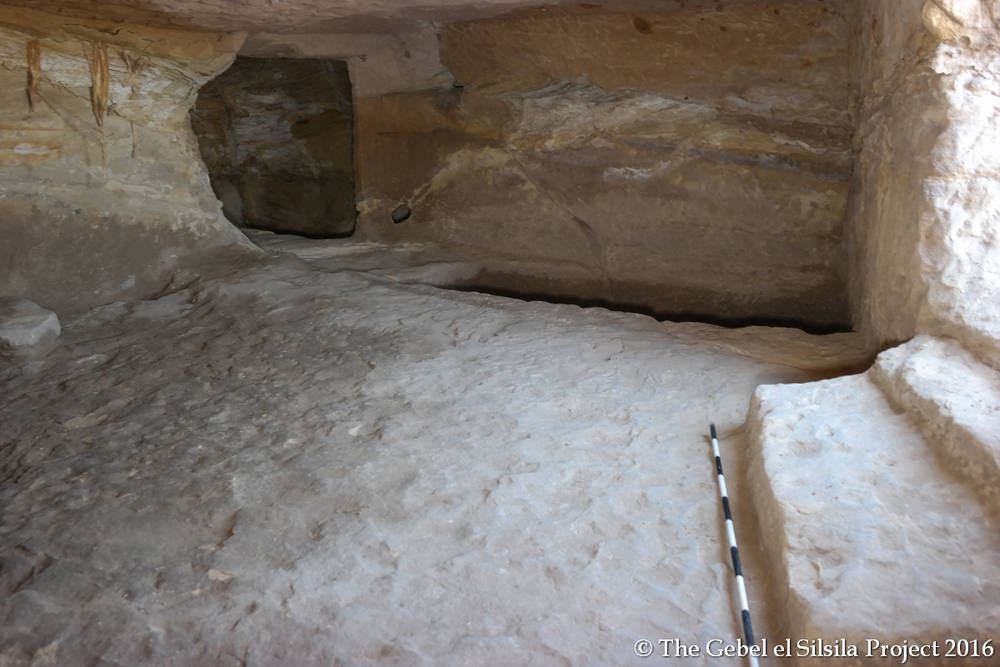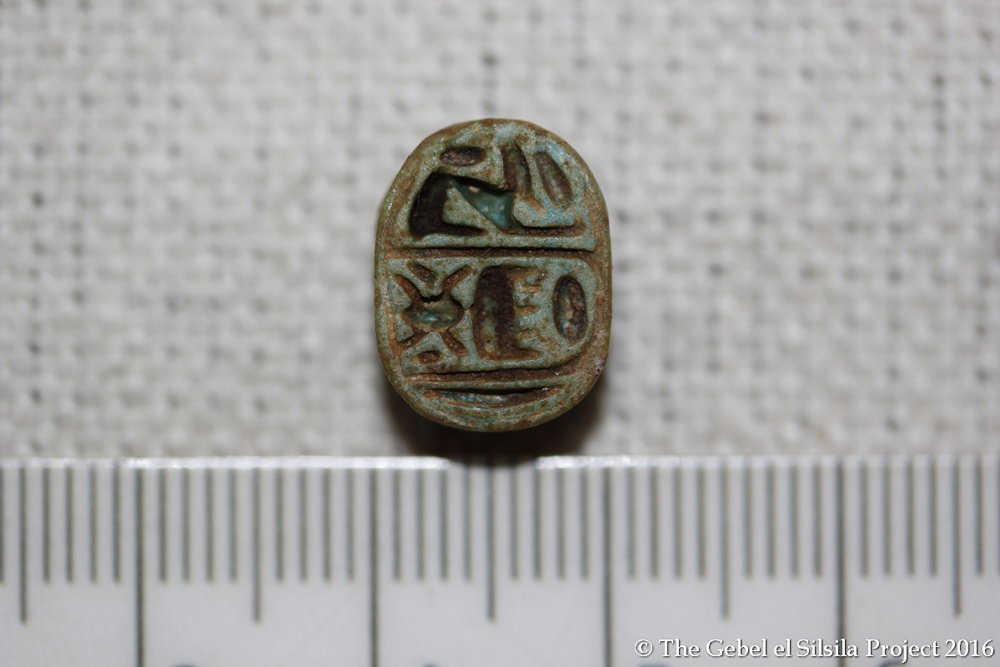42 Tombs and a Shrine Discovered in Egypt

Forty-two rock-cut tombs and a shrine decorated with a winged sun disc have been found along the banks of the Nile River in Egypt.
The discovery of this necropolis, the burial ground of men, women and children, proves that Gebel el-Silsila in Upper Egypt was not just a quarry site for the kingdom's temples and tombs; it was also a bustling population center, according to the archaeological team that discovered the structures.
"This is actually a major hub of commerce, worship and possibly political [activity]," said John Ward, assistant director of the Gebel el Silsila Survey Project.
A big mystery surrounds the new tombs, however. Where is the lost city of Silsila? So far, archaeologists have discovered tombs, the quarry, a temple and slab monuments called stelae. But they haven't found a town or village where the people who used these structures would have lived. [See photos of the new tomb discoveries in Upper Egypt]
Flooded graves
Silsila was originally believed to be a sort of work camp, where the predominant activity was quarrying for sandstone. Survey project mission director Maria Nilsson, Ward and their colleagues have been discovering much more than that at the site, however. Earlier this year, for example, they announced the discovery of six statues dating back 3,500 years that depicted elite families.
Yesterday (March 30), Ward, Nilsson and the Ancient Egyptian Antiquities Sector announced the spring archaeological season discovery of the new tombs. They date back to the 18th and 19th dynasty, a period of time that runs from about 1543 B.C. to about 1189 B.C., which includes famous pharaohs like Hapshetsut.
Get the world’s most fascinating discoveries delivered straight to your inbox.
Archaeologists had known that rock-cut openings were present on the site's Nile bluffs, Ward told Live Science. But the river has been eating away at the sandstone exteriors, damaging the structures. The group of archaeologists launched a project to clean out three of the openings, both to find out what was inside them and to see if they could slow down the erosion.
They found that the tombs were filled with Nile silt, indicating that they'd been flooding before the first dams in the river were constructed in the 1800s. This silt was acting as a "sponge" to draw in river water, worsening the erosional damage, Ward said.
"Once we started to clear this Nile silt, we could see that the actual sandstone surface itself was starting to dry out," he said.
"Tomb" 1, which was already clear of silt, turned out not to be a tomb, but a two-room shrine. While the outer room overlooks the Nile to the west, the inner room, which once had a slightly elevated floor, is damaged by water, Ward said. Despite the water damage, a carved stone solar disc with wings — a symbol of power and protection — is still visible, he said.
Tomb 2 is an actual tomb, with stairs leading down into a rough-cut chamber without paintwork or any interior design. The space is so small that workers have to kneel to fit inside rather than stand up, Ward said. Many human bones were found in a jumble inside, which was probably caused by the Nile waters, he said. The tombs were also looted at some time in antiquity. Still, they contained many pieces of pottery such as beer jugs, offering plates, and bowls and storage jars — all funerary wares that were used in ancient Egyptian tombs, Ward said. [Photos: Nile Cemetery Discovered in Sudan]

People of status
The other two tombs that have been cleaned out, Tombs 14 and 15, were also looted, but both contained crypts carved into the floor. The crypt in Tomb 15 even retains half its lid, Ward said. The excavation also turned up "lots and lots of beads," Ward said. And most intriguingly, the archaeologists found a scarab amulet bearing the name of the 18th-dynasty Pharaoh Thutmose III and a seal right along with his cartouche (an oval symbol surrounding a royal name), reinforcing the theory that Silsila was more than just a work camp for quarry diggers. These artifacts suggest that the people buried in the tombs were of higher standing than quarry workers, Ward said.
Each of the documented tombs has a door with notches carved in the door jambs that could have held a stone portcullis, which could have been raised or lowered for new burials.
"These are family tombs," Ward said. The portcullis closures would have kept out floodwaters and wildlife, though maybe not permanently. In Tomb 14, the archaeologists found crocodile scutes — the triangular, bumpy protrusions seen on crocs' backs. It's not certain whether a crocodile made it into the tomb, Ward said, or whether the scutes flowed in with the Nile floodwaters.
The team members plan to excavate more tombs in the next field season, and hope to find remains or names of the tomb occupants. They're also continuing the survey in hopes of solving the biggest mystery surrounding Silsila: Where was the town, or village, that this necropolis served?
"We're pretty excited, to say the least," Ward said. "It's kind of nice to be able to say, 'Silsila, we've got a necropolis now.'"
Follow Stephanie Pappas on Twitter and Google+. Follow us @livescience, Facebook & Google+. Original article on Live Science.

Stephanie Pappas is a contributing writer for Live Science, covering topics ranging from geoscience to archaeology to the human brain and behavior. She was previously a senior writer for Live Science but is now a freelancer based in Denver, Colorado, and regularly contributes to Scientific American and The Monitor, the monthly magazine of the American Psychological Association. Stephanie received a bachelor's degree in psychology from the University of South Carolina and a graduate certificate in science communication from the University of California, Santa Cruz.
